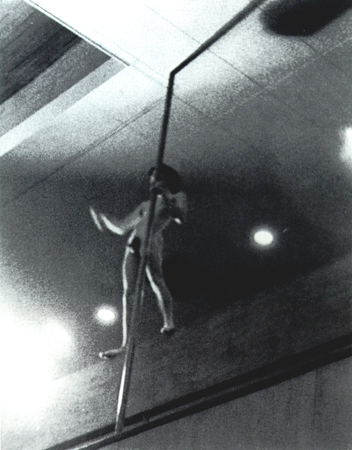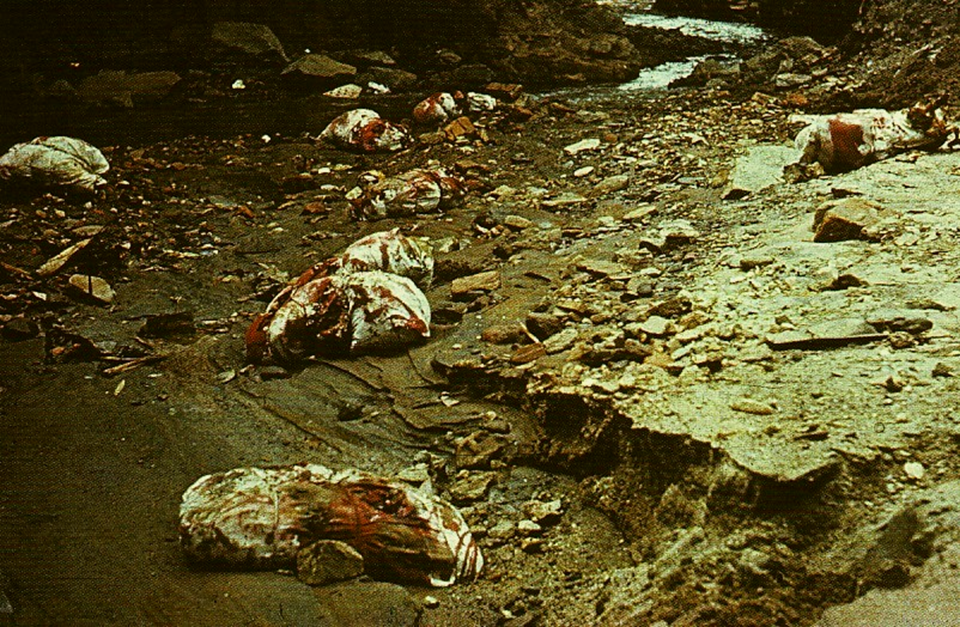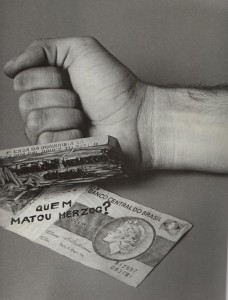In a ti me of mourning, processing and making our best to re-exist in the glooming post-electoral atmosphere in Brazil, SPW brings back to our screens three artists who used their work, bodies and words to open spaces, albeit narrow, during the somber days of the military dictatorship (from 1964 to 1985).
me of mourning, processing and making our best to re-exist in the glooming post-electoral atmosphere in Brazil, SPW brings back to our screens three artists who used their work, bodies and words to open spaces, albeit narrow, during the somber days of the military dictatorship (from 1964 to 1985).
This was when “art left the museums and went to the streets and was transcribed even on the bodies of artists” in the words of art historian Claudia Calirman. In the early 1970s, painting and sculpture gave way to performance, that took on the main stage of artistic expression because of its ephemerality, which makes it easier to dribble censorship against what was written, sculpted or painted. Bodies and streets became the canvases where the denunciation of state violence and the nostalgy of freedom were artistically manifested in surprising and fleeting interventions.
“The body is the work”, Antonio Manuel (1970)

In 1970, Antonio Manuel’s project “The body is the work” was rejected by the National Saloon of Modern Art (MAM) in Rio de Janeiro.
In response, Manuel appeared naked at the opening vernissage of the Saloon at the MAM, that was later reconstructed as an act in a photo installation named “Corpobra” (“bodywork” in English).
“Bloody muggle”, by Artur Barrio (1970)
Artur Barrio explored ‘precariousness’, to evoke Butler’s concept, as to summon all we push aside: forms and materials neglected by the aesthetic criteria promoted by the “first world” art establishment.
The use of such materials were also to evoke the remnants and disposals of lethal State repression. He filled muggles with nails, bones, trash, blood, food, hair, rubber, urine and the muggles were left in dumping spaces, such as sewers, alleys and streams.
His work provoked both curiosity and repudiation in the audience. And as it also happened with the remnants of repression left on streets, the muggles were often collected by the Police for investigation.

“Insertion into ideological circuits”, by Cildo Meirelles
The series “Insertions into ideological circuits”, developed by Cildo Meireles, sought to explore communication and artistic alternatives to a true guerrilla against the dictatorship.
In this series, Meirelles put into his contestation work in wide circulation in society, using money bills and Coke bottles. The way and purpose Meirelles used them while subverted the original meaning intended for these objects/platforms.
The bills were stamped with denunciations of state crimes and the bottles were printed with messages like “Yankees, go home”, a recipe for making a Molotov home explosive and other texts addressing US imperialism and the global commodity exchange.
An used bill of Cruzeiro (the currency at the time) was stamped with the question: Who killed Vladimir Herzog?. Vladimir Herzog was a journalist murdered during a session of torture, whose death was denied by authorities.
It is worth mentioning that, as absurd as it may seem, in 2018 the practice of torture perpetrated during the military years is once again denied by the recently elected president and his supporters.


